|
|
|
Sort Order |
|
|
|
Items / Page
|
|
|
|
|
|
|
| Srl | Item |
| 1 |
ID:
133405
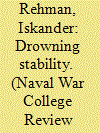

|
|
|
|
|
| Publication |
2012.
|
| Summary/Abstract |
In May 1998, the sun-scorched deserts of the Indian state of Rajasthan shook with a succession of nuclear explosions. Barely two weeks later, in a seemingly tit-for-tat response, Pakistan conducted its own series of detonations, in the remote western hills of Baluchistan. Both nations' previously concealed nuclear capabilities had suddenly burst out into the open, giving a new and terrifying form to the enduring rivalry that had convulsed the subcontinent for decades. Caught off guard, the international community reacted with indignation and dismay. Concerns over nuclear escalation in the event of another Indo-Pakistani conflict refocused Washington's attention on South Asia and triggered the longest sustained level of bilateral Indo-American engagement in history. This had the unexpected benefit of enabling both democracies finally to find common ground, after many years of acrimony, chronic mistrust, and squandered opportunities. Fears of mass terrorism in the wake of 9/11 and subsequent revelations of extensive proliferation emanating from Pakistan added urgency to Western desires to preserve a modicum of crisis stability in South Asia, as well as to prevent any form of escalatory behavior that could spiral into nuclear conflict or further the spread of radioactive material.
|
|
|
|
|
|
|
|
|
|
|
|
|
|
|
|
| 2 |
ID:
127854
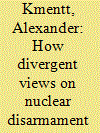

|
|
|
|
|
| Publication |
2013.
|
| Summary/Abstract |
The nuclear Nonproliferation Treaty (NPT) is facing several serious challenges. There are increasing doubts about its effectiveness in preventing the proliferation of nuclear weapons. The actions of North Korea are deeply worrying and significantly undermine the NPT edifice. The complex issue of the Iranian nuclear program and if and how it can be resolved will have serious repercussions for the treaty.
Universality is a key ingredient of the NPT's credibility, but looks more and more distant. Without India, Israel, and Pakistan, which never were parties, and North Korea, which declared its withdrawal from the treaty in 2003, the NPT's value as a security and confidence-building instrument is increasingly put into question in the regional contexts of the Middle East and Asia. Arguably its most serious challenge, however, is the extent to which it can still be considered as a framework in which to achieve nuclear disarmament. Fundamentally different and even conflicting views are apparent among the NPT membership on key aspects, such as the priority of nuclear disarmament, the demands of Article VI,[1] the definition of credible progress, and the way forward. These differences threaten the integrity of the NPT.
|
|
|
|
|
|
|
|
|
|
|
|
|
|
|
|
| 3 |
ID:
124788
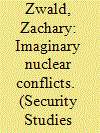

|
|
|
|
|
| Publication |
2013.
|
| Summary/Abstract |
Although the question of how policymakers arrive at their nuclear doctrine and force structure preferences is one of unparalleled importance, it has not received systematic attention in international relations. This article, therefore, develops and illustrates a behavioral model of nuclear deterrence preference formation wherein variation in such preferences is a function of the content and flexibility of one's theory-driven thinking. A policymaker determines the value of potential doctrine and force structure positions in the context of his or her beliefs about the nature of how nuclear conflict will likely begin and proceed-i.e., whether more as a result of rational and deliberate action or due to fear, misperception, and accident. This analysis challenges the dominant explanations of doctrine and force structure preference formation that are implicit in IR. It suggests how the dialogue of the deaf in domestic debates over nuclear weapons policy can be reduced in the future and provides new criteria by which to recast the proliferation optimist-pessimist debate.
|
|
|
|
|
|
|
|
|
|
|
|
|
|
|
|
| 4 |
ID:
127860
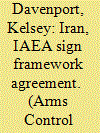

|
|
|
|
|
| Publication |
2013.
|
| Summary/Abstract |
Iran and the International Atomic Energy Agency (IAEA) last month signed a framework agreement outlining future cooperation on the agency's investigations into Tehran's past activities that are suspected of having been part of an effort to develop nuclear weapons. The agreement included six initial actions for Iran to take by mid-February 2014 that will provide the IAEA with access to two nuclear sites and information on Iran's planned nuclear power plants and research reactors. IAEA Director-General Yukiya Amano and Ali Akbar Salehi, head of the Atomic Energy Organization of Iran, signed the agreement in Tehran on Nov. 11. In a statement following the signing, Amano said that "subsequent steps" under the framework would address issues that the six actions do not cover.
|
|
|
|
|
|
|
|
|
|
|
|
|
|
|
|
| 5 |
ID:
127859
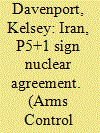

|
|
|
|
|
| Publication |
2013.
|
| Summary/Abstract |
Iran and six world powers last month achieved an apparent breakthrough in negotiations over Tehran's controversial nuclear program when the parties reached a first-phase agreement on a six-month deal that will halt Iran's most sensitive nuclear activities and increase international monitoring of its nuclear program in exchange for some relief from sanctions that have hurt Iran's economy.
|
|
|
|
|
|
|
|
|
|
|
|
|
|
|
|
| 6 |
ID:
127857


|
|
|
|
|
| Publication |
2013.
|
| Summary/Abstract |
In February 1993, Russia and the United States signed an agreement on the disposition of highly enriched uranium (HEU) extracted from Russian nuclear weapons.[1] Under the terms of the deal, Russia undertook to down-blend 500 tons[2] of HEU, enough to build 20,000 nuclear warheads, over a 20-year period. The two sides agreed that the resulting low-enriched uranium (LEU) would be used as fuel by nuclear power plants in the United States, hence the informal name of the program, "Megatons to Megawatts."
In January 1994, Russia's Techsnab-export (Tenex) and the United States Enrichment Corporation (USEC), the state-run companies authorized by their respective governments to implement the deal, signed the contract. In the U.S. case, that meant that USEC was a supplier of enriched uranium to private utilities. According to assessments made at the time, the value of the entire program was expected to reach about $12 billion.
|
|
|
|
|
|
|
|
|
|
|
|
|
|
|
|
| 7 |
ID:
127856


|
|
|
|
|
| Publication |
2013.
|
| Summary/Abstract |
As the Dutch "sherpa" for the nuclear security summit scheduled to take place March 24-25 in The Hague, Piet de Klerk is the host country's lead coordinator and negotiator for the event. Before taking that position in mid-2012, he was the chairman of the Nuclear Suppliers Group. From 2011 to 2013, he was the Dutch ambassador to Jordan. In previous postings with the Dutch Foreign Ministry and the International Atomic Energy Agency (IAEA), he has held numerous positions dealing with nuclear arms control and nonproliferation.
|
|
|
|
|
|
|
|
|
|
|
|
|
|
|
|
| 8 |
ID:
128262


|
|
|
|
|
| Publication |
2013.
|
| Summary/Abstract |
In the two and a half years since the March 11, 2011 earthquake and tsunami disaster followed by the nuclear accident at Fukushima power plant, the Japanese government has been investigating the cause as well as assessing the responses taken as disaster management. This article analyzes the measures taken and makes recommendations for clarifying responsibility to improve efficiency and effectiveness in mitigating damage after a large-scale disaster.
It is highly regrettable that, although the result of a massive earthquake and tsunami of an unprecedented scale, the accident at the Fukushima nuclear power plant developed into a core meltdown, releasing nuclear material and forcing many residents to evacuate their homes. The crisis has undermined public faith in the safety of nuclear power generation. The Japanese government and Tokyo Electric Power Company (TEPCO) must conduct a thorough investigation into the cause, and review and assess the validity of the existing emergency response procedures as well as the relevancy of the measures actually taken for resident evacuation and radiation damage control in collaboration with the International Atomic Energy Agency (IAEA) and other international and government agencies. Sharing the results internationally will help improve nuclear safety around the world.
The biggest problem surrounding the accident was the intricate chain of command and control for disaster management. Since the authority and responsibility of the agencies concerned were extremely ambiguous, the government was unable to make good use of the systems and institutions designed to cope with nuclear disasters. To make matters worse, newly created posts and entities complicated the problem.
|
|
|
|
|
|
|
|
|
|
|
|
|
|
|
|
|
|
|
|
|